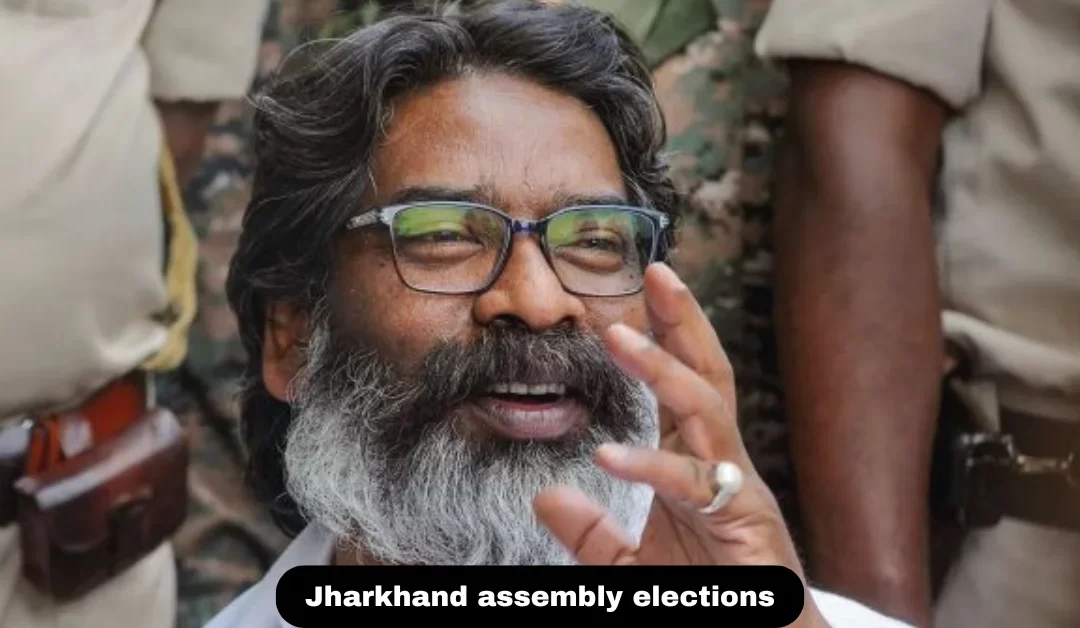Introduction Hemant Soren, leader of the Jharkhand Mukti Morcha (JMM), is all set to return as the Chief Minister of Jharkhand. Backed by the INDIA bloc, Soren’s party and its allies have taken the lead in 56 of the 81 Assembly constituencies. This victory is a significant achievement for the INDIA alliance, which managed to consolidate support across the state. Meanwhile, the Bharatiya Janata Party (BJP) faced a tough defeat, winning only 21 seats, four fewer than the previous assembly elections.
A Look at the Election Results
The Jharkhand assembly elections saw fierce competition between the INDIA bloc and the BJP-led National Democratic Alliance (NDA). The INDIA bloc’s strong performance was powered by JMM, which resonated with voters in tribal and rural areas. Key highlights include:
- Seat Distribution
- The INDIA bloc secured leads in 56 constituencies.
- The BJP managed to win 21 seats, with a vote share of 33.26% across 68 contested seats.
- The NDA’s allies, including the All Jharkhand Students Union (AJSU) and Lok Janshakti Party (Ram Vilas), contributed just two seats.
- Notable Defeats
- AJSU party chief Sudesh Mahto suffered a surprising defeat in Silli.
- Prominent leaders like Sita Soren (Jamtara), Sunil Soren (Dumka), Geeta Koda (Jagannathpur), and Seema Munda (Potka) also lost.
- Regional Analysis
- The BJP struggled in tribal-dominated regions like Santhal Pargana, where it won only one out of 18 seats.
- In Palamu, the BJP performed relatively better, winning four out of nine seats.
- In North Chotanagpur, BJP and its allies secured 14 of 25 seats, their best showing.
- In South Chotanagpur and Kolhan regions, the BJP’s performance was dismal, securing only five seats combined.
BJP’s Campaign Strategy Falls Short
The BJP, under the leadership of Assam Chief Minister Himanta Biswa Sarma, focused its campaign on the issue of Bangladeshi infiltration. The party claimed that demographic changes were adversely affecting the tribal population in Jharkhand. However, this strategy failed to gain traction among voters. The narrative resonated in only a few pockets but did not translate into electoral success.
Why the Strategy Didn’t Work:
- Disconnect with Local Issues
- The infiltration narrative seemed out of touch with the immediate concerns of the people, such as unemployment, healthcare, and tribal welfare.
- Strong Tribal Support for JMM
- Hemant Soren’s JMM has a strong base among tribal communities. Their focus on local governance, tribal rights, and rural development overshadowed the BJP’s campaign.
- Lack of Ground-Level Connection
- The BJP’s campaign failed to connect with voters at the grassroots level. Meanwhile, the INDIA bloc’s consistent outreach efforts paid off.
Hemant Soren’s Resurgence
The victory marks a major comeback for Hemant Soren, who had faced legal troubles earlier in the year. His leadership and focus on tribal rights and welfare programs resonated with voters, ensuring a decisive win for the INDIA bloc.
Factors Behind JMM’s Success:
- Tribal Welfare Programs
- Hemant Soren’s government prioritized policies that benefited tribal communities, such as land rights, education, and healthcare.
- Strong Coalition
- The INDIA bloc’s unity and shared vision strengthened their appeal to a diverse voter base.
- Effective Campaigning
- The bloc’s focus on local issues like employment, inflation, and infrastructure struck a chord with voters.
Key Takeaways
- Voter Sentiment
- The election results reflect a strong preference for grassroots leadership and local governance over national narratives.
- BJP’s Challenges
- The BJP needs to reassess its strategy in tribal-dominated states, where regional parties like JMM have a stronghold.
- INDIA Bloc’s Growing Influence
- The INDIA alliance’s victory in Jharkhand showcases its ability to counter the BJP in key states by focusing on local issues and unity.































